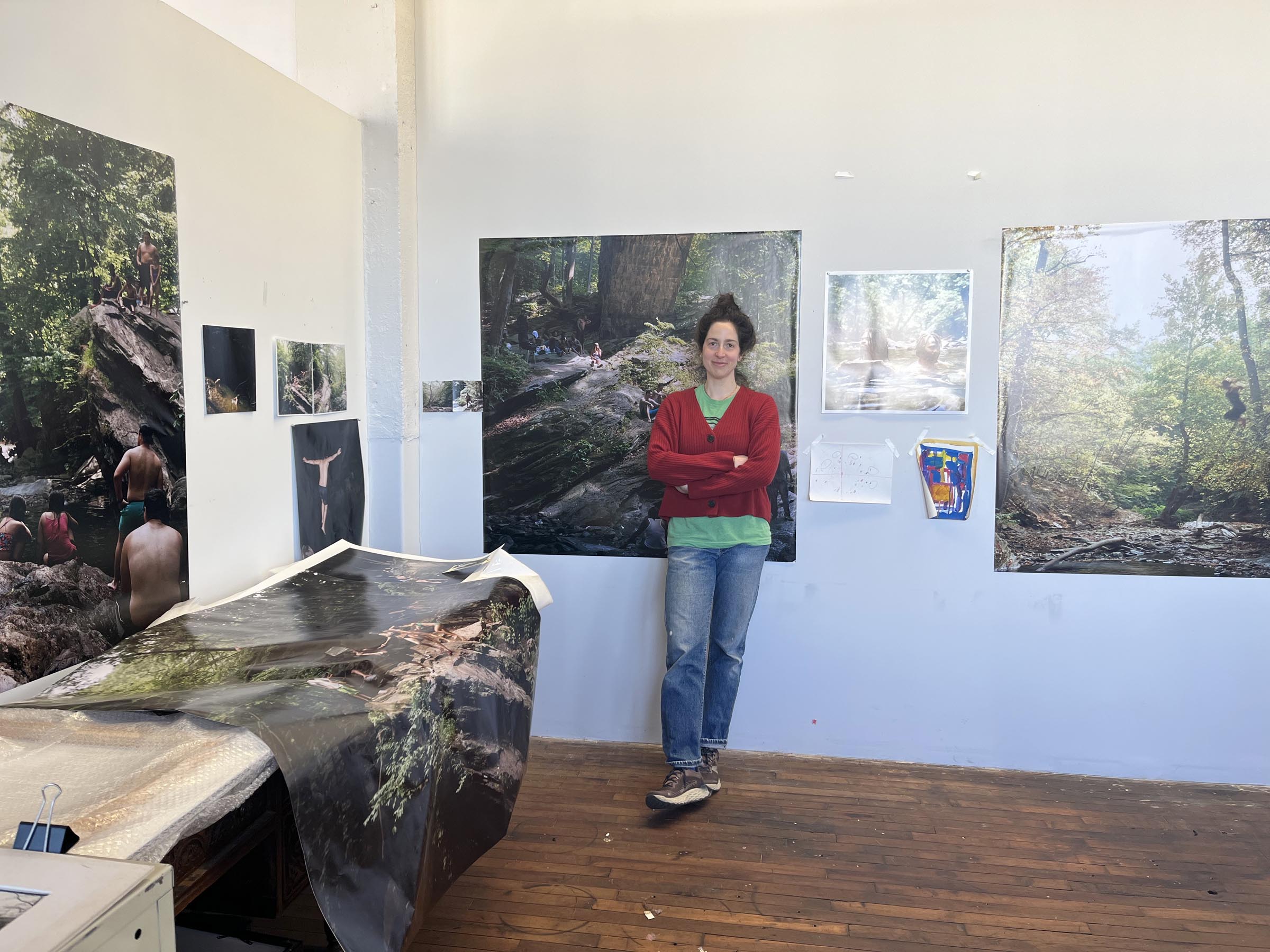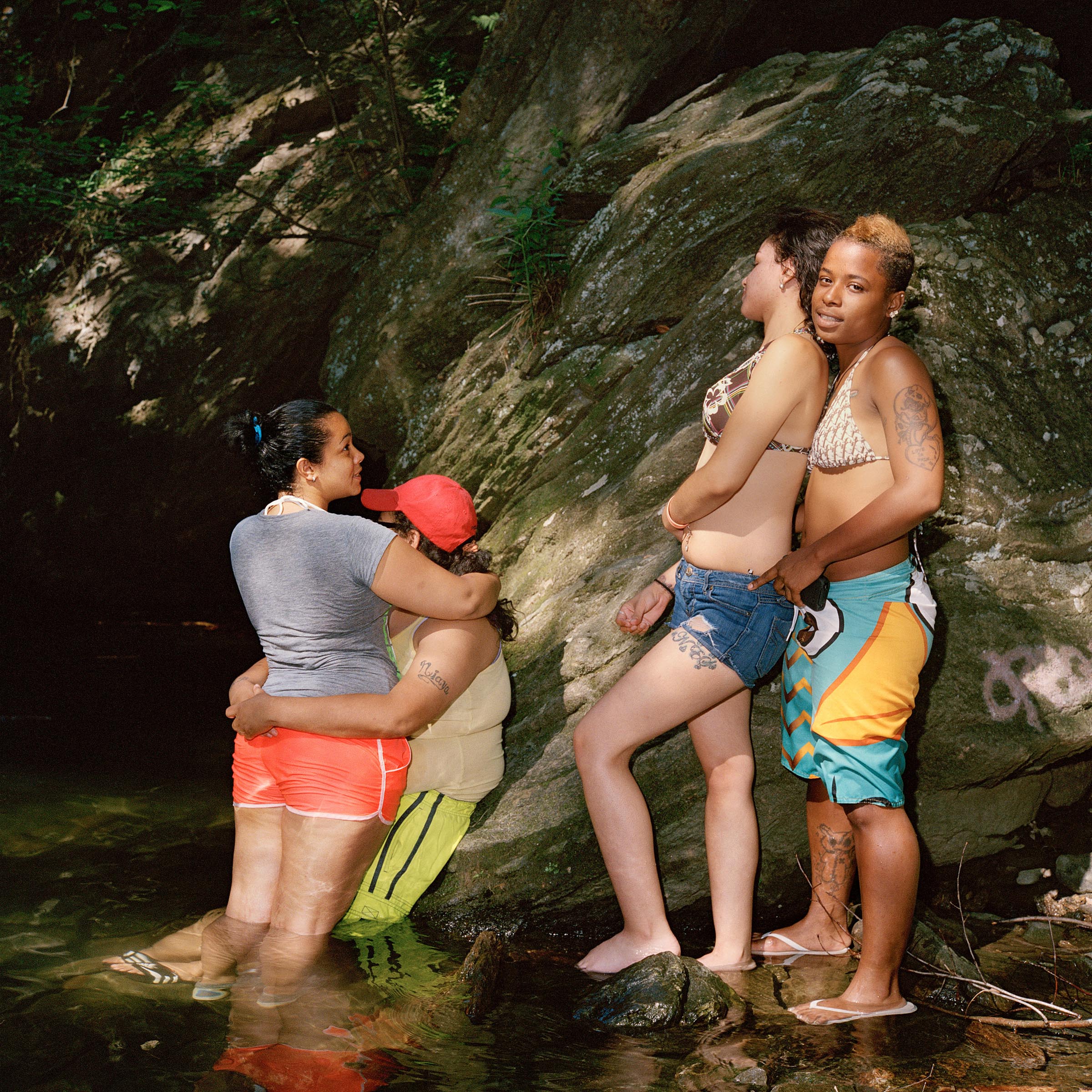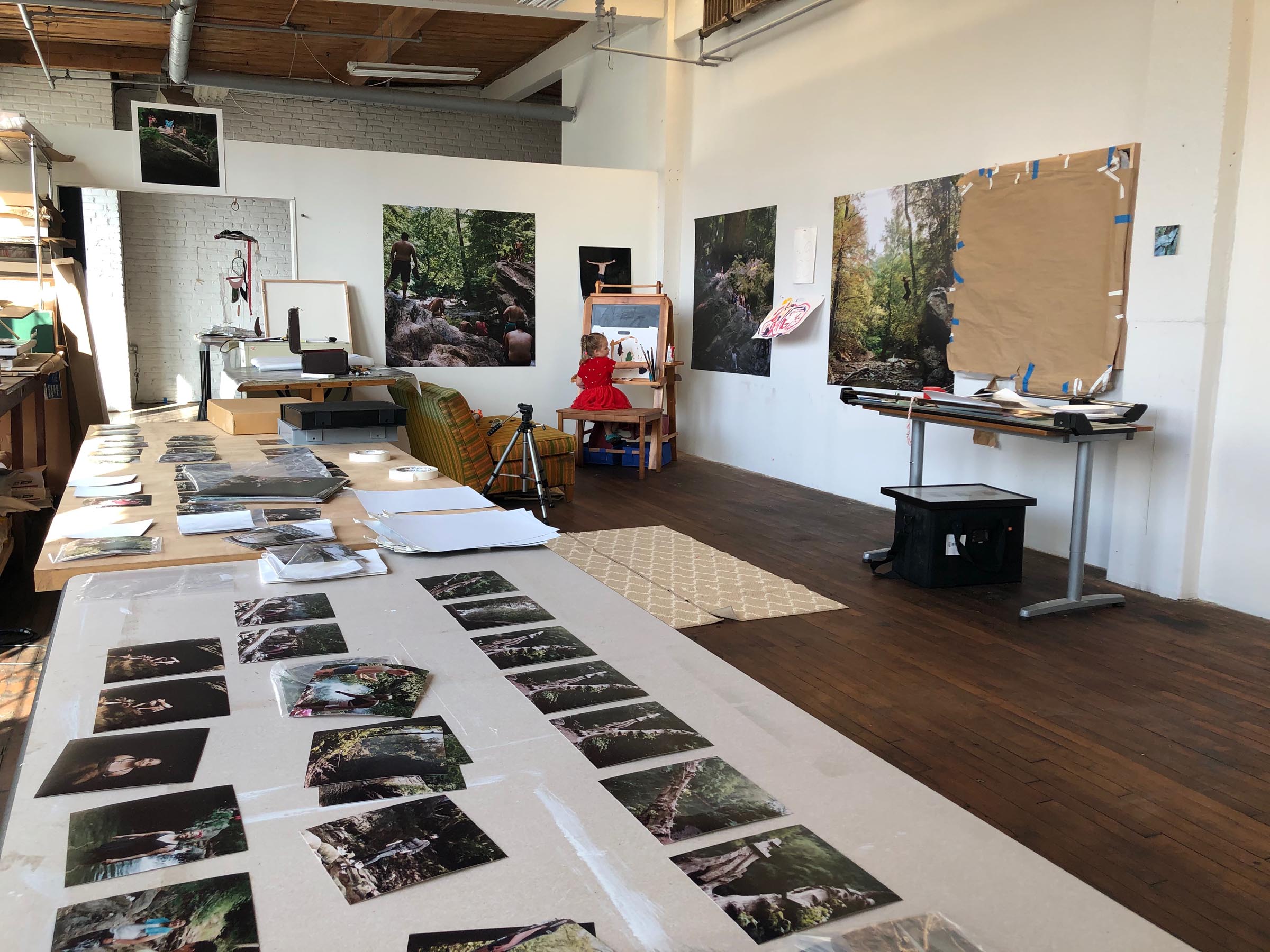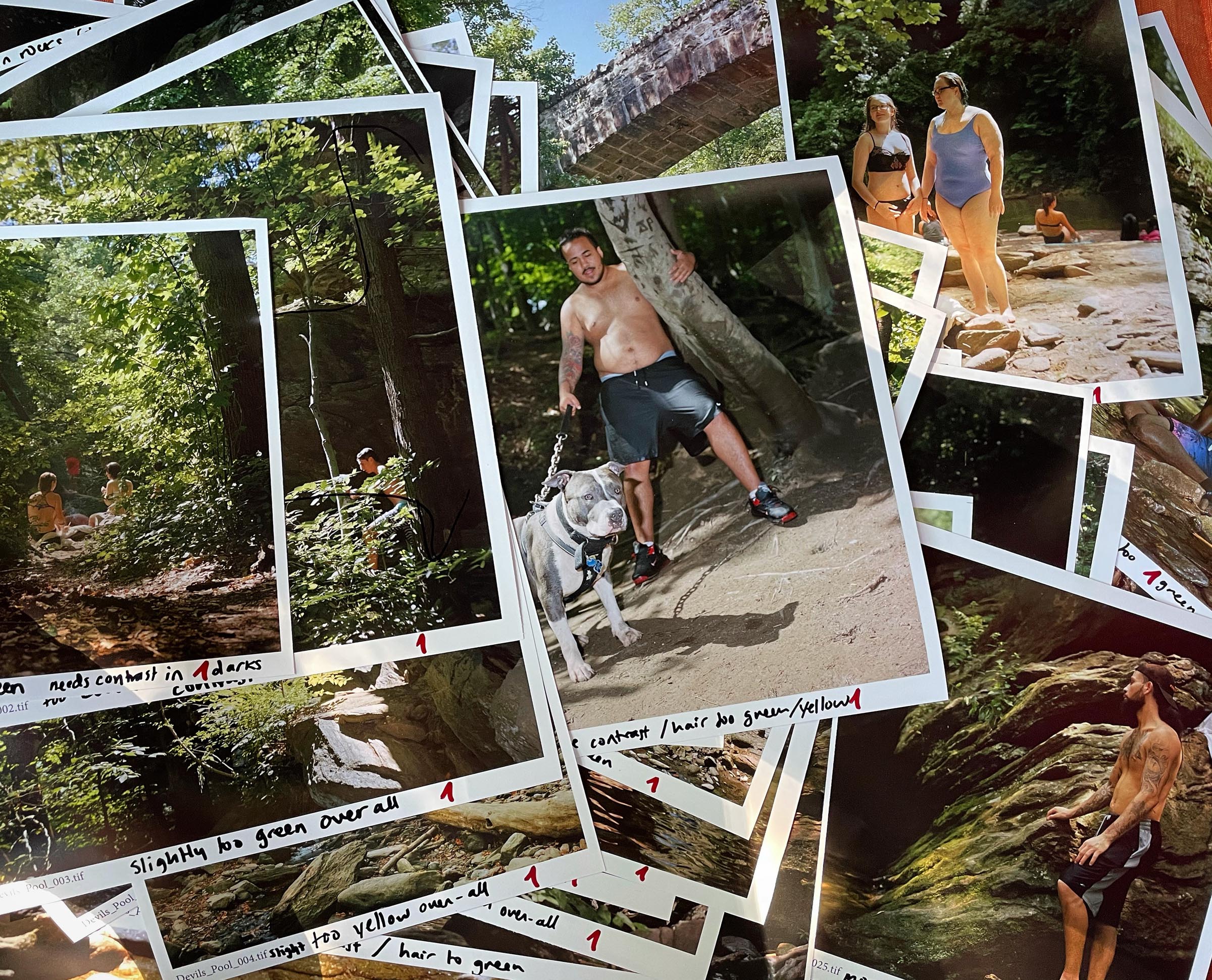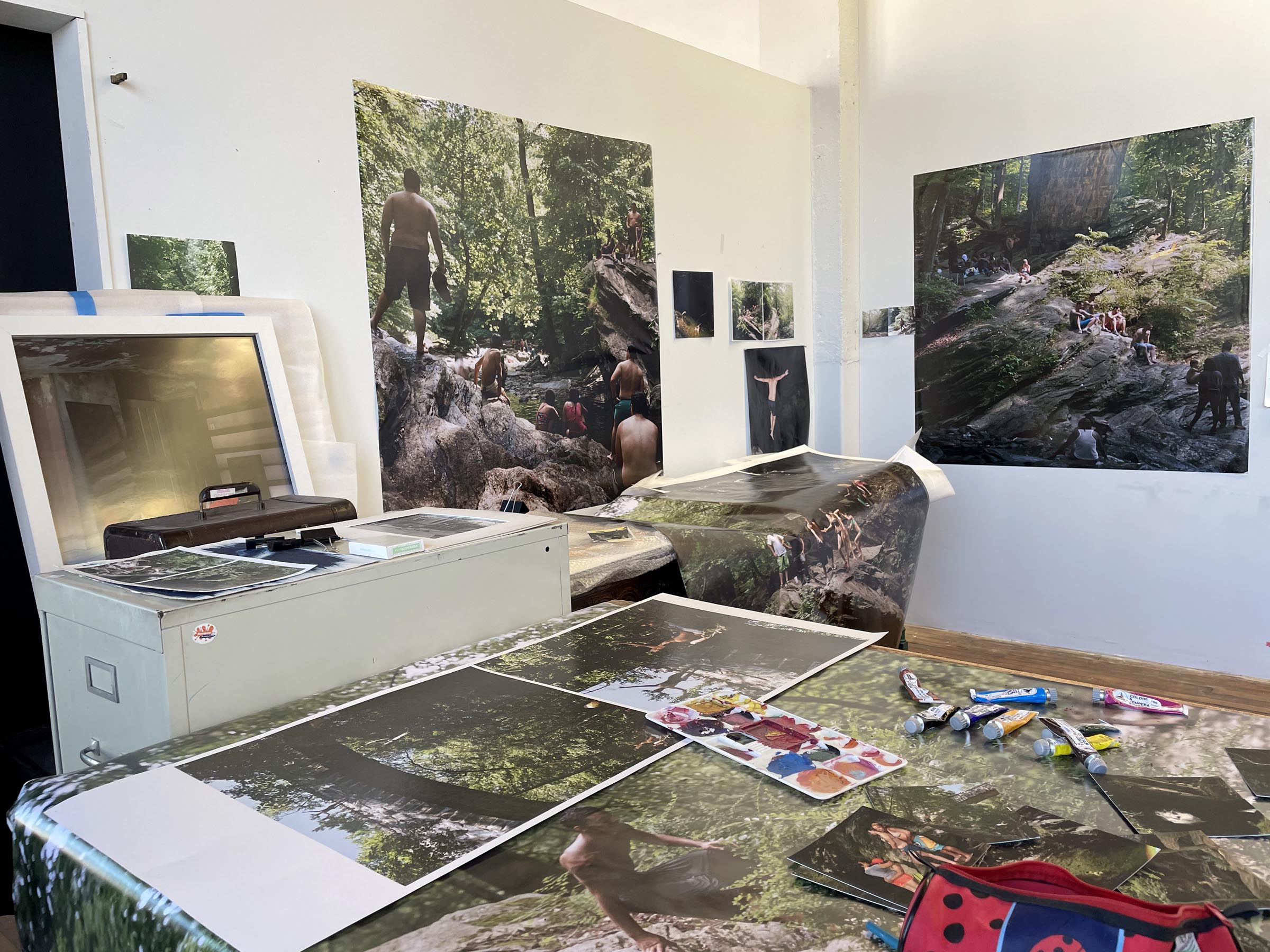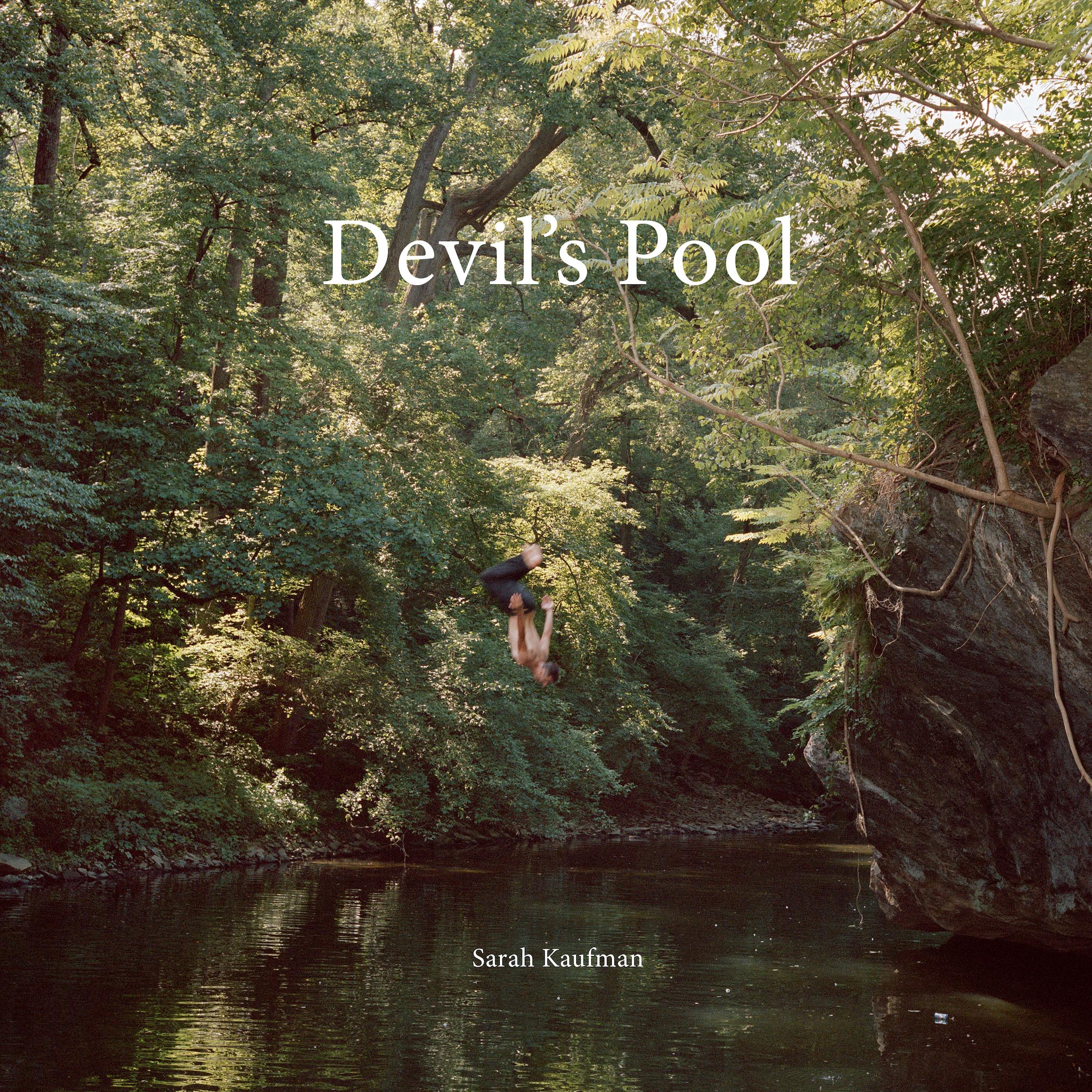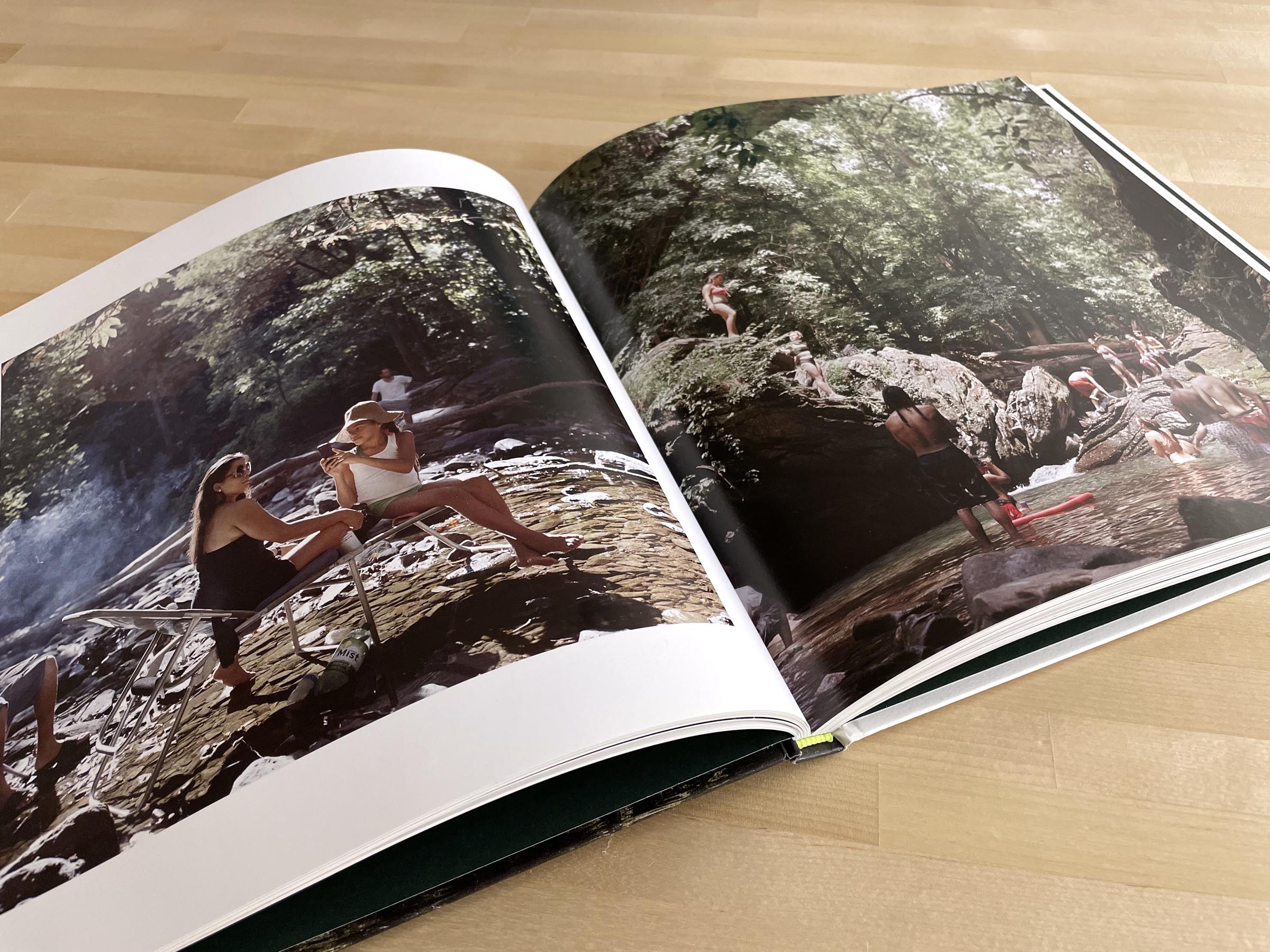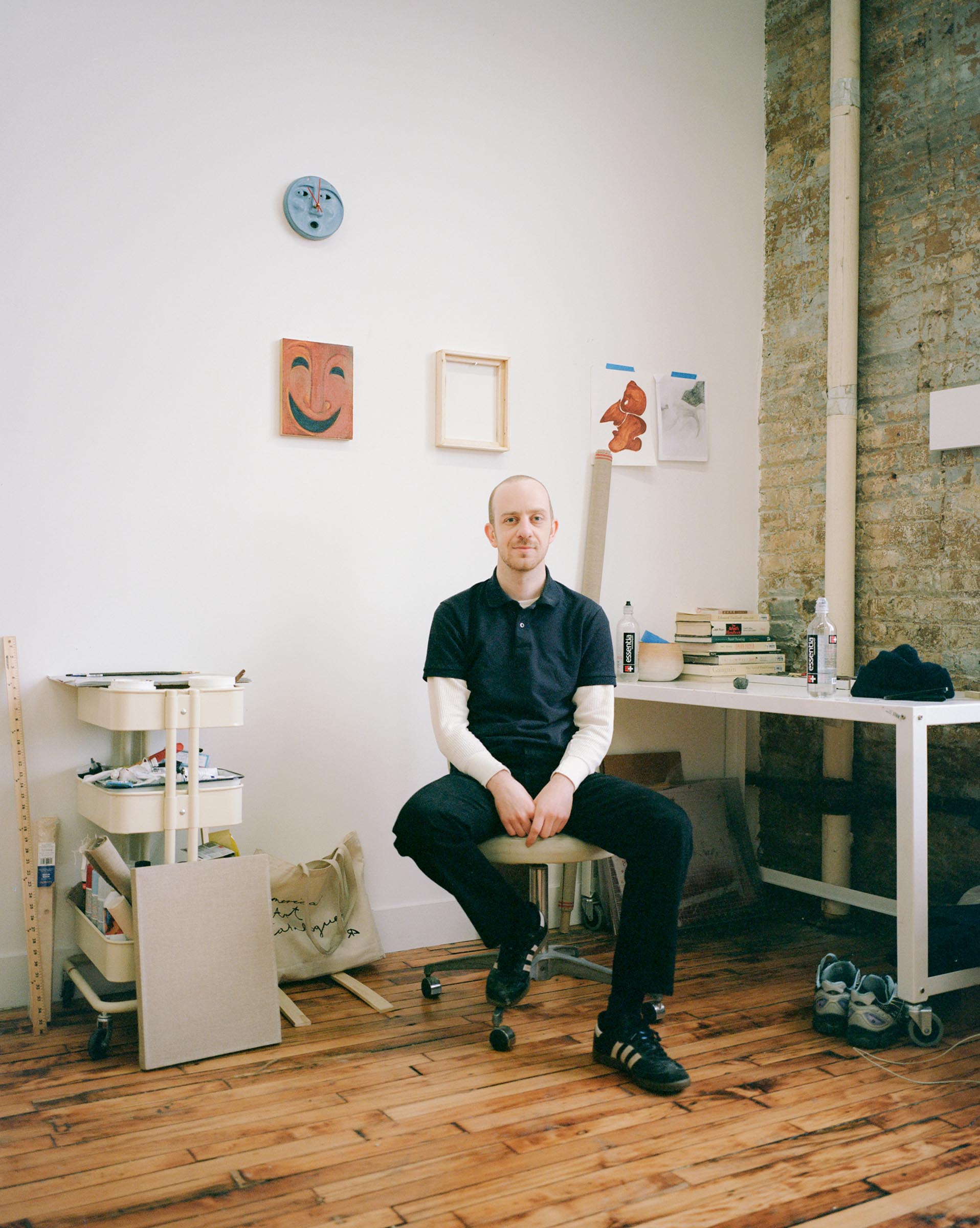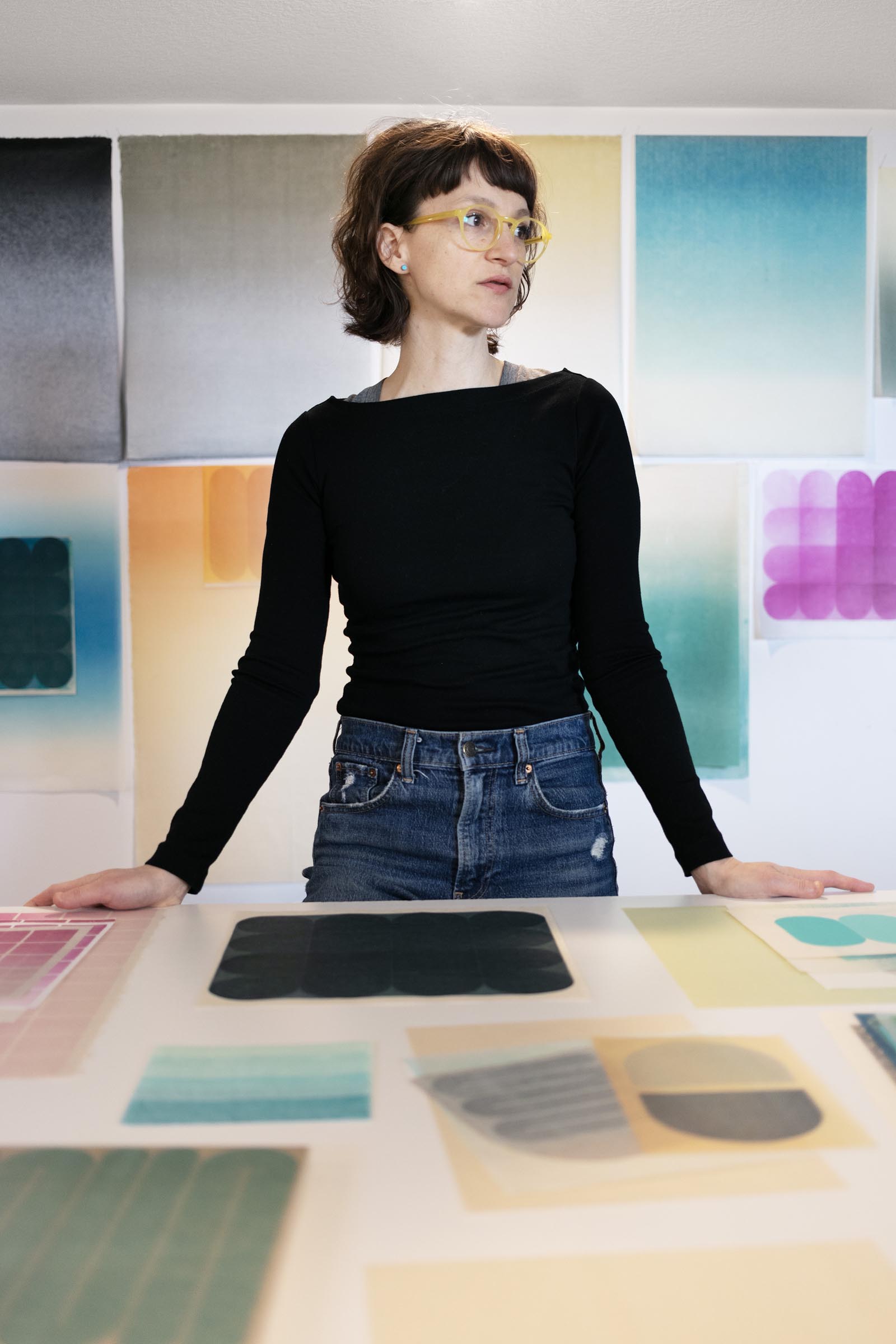How did you get into making art?
Making things has always been there for me but a few particular times in my life stand out. When I was a young child, my mother kept a 35 mm Canon TX from an earlier time tucked away in a drawer. I was not allowed to use it but every so often she would let me wander around the house looking through the viewfinder. I was captivated. Something about that translation of everyday views into distinct moments, it was like seeing newness.
In my first semester of college, I was lucky enough to lottery in to the popular intro to photography course—sometimes I wonder what would have happened if I had not gotten a spot. From that point on, making photographs became the thing that punctuated my life. Saving that time, making that time to photograph and work in the studio/darkroom felt like a constant, a need that I had to attend to.
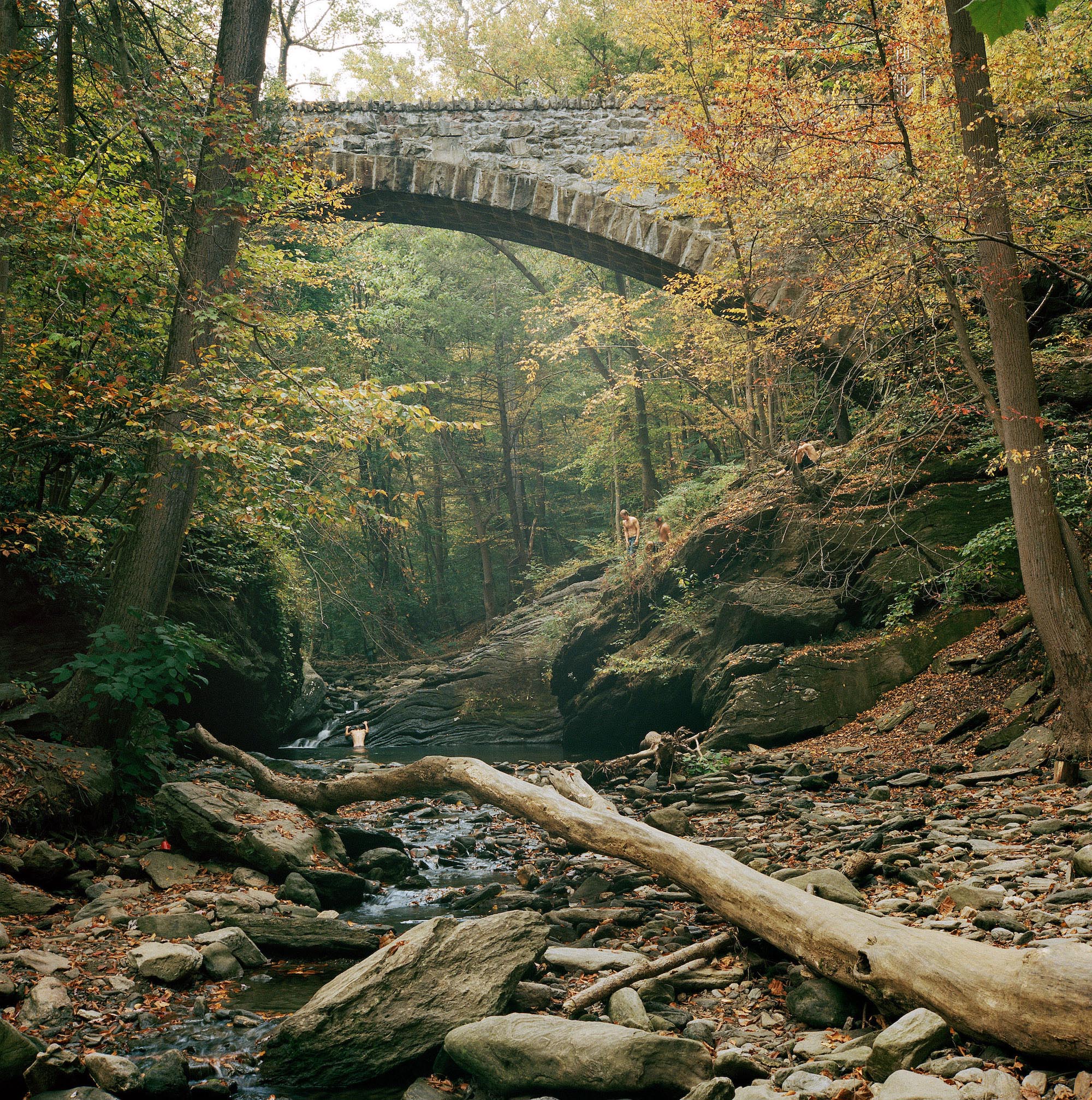
What are you currently working on?
I am getting going on a project about human connection/communion with nature in its various forms throughout the urban environment. I’m looking at how we relate to the landscape and how the natural world affects how we exist in our bodies. This project is a wider exploration of ideas coming out of my recently completed book, Devil’s Pool. I published that work a year ago and have been taking some necessary time to figure out what’s next.
I’m looking at how we relate to the landscape and how the natural world affects how we exist in our bodies.
Sarah Kaufman

What inspired you to get started on this body of work?
Curiosity about revealing the human body absorbed in unselfconscious moments has long driven my photography and research. My recent work, Devil’s Pool, explores the intersection between the body and nature and looks at how the landscape can allow us to exist freely in our physical selves, absorbed in the experience of place. Devil’s Pool, an unsanctioned swimming hole in Philadelphia’s Fairmount Park, magnetically draws people from all over, and this work explores the complex, layered story that unfolds here. The film photography project, spanning seven years, investigates how people relate to their environment and affirms the human need and impulse to commune with the natural world. The work pictures a diversity of human form, celebrating the body interacting with nature and recognizes traditions that follow both the landscape and bathing throughout art. The photographs highlight the value of access to green spaces within an urban setting, and a sense of discovery and revelry through connecting to nature. Through photographing at Devil’s Pool, I began to see the landscape, both tamed and wild, as a fundamental force that fosters our potential to exist unselfconsciously and fully present within ourselves and our surroundings.

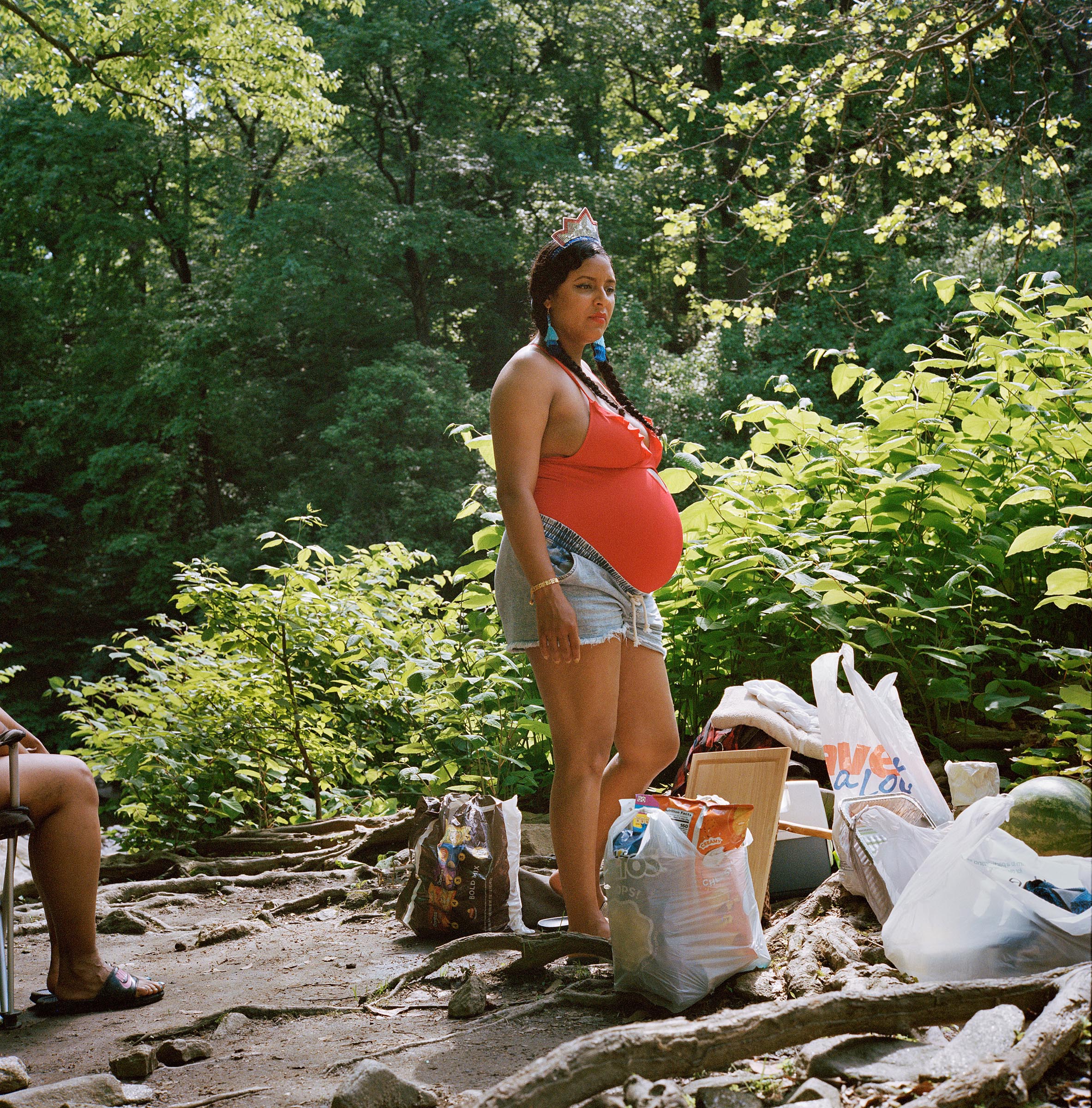
Do you work on distinct projects or do you take a broader approach to your practice?
I am slowly learning to trust that I need to take a broader approach in order to come to the next distinct project. When I am in the phase of testing widely, I always feel anxious that I will never figure out which ideas to hone and pursue. It can take me years of working to come to an idea and then years to move all the way through it.
What’s a typical day like in your studio?
The most gratifying “studio” days for me do not involve my studio at all, but are days when I can get up and go out with my camera and not come back until I am physically worn out. A good day means I have walked a lot, used my body to crouch and bend, talked with lots of people as I have photographed them, probably gotten sweaty, dirty, wet, and had some snacks under a tree. After a day like that I have all the hope that I will find something meaningful to me on my film.
Who are your favorite artists?
I love looking at art, mostly photography and painting, that heightens something about the body within the everyday. Justine Kurland, Emmet Gowin, Clifford Prince King, Philip Pearlstein, and Aaron Gilbert are just a few.
Where do you go to discover new artists?
I am a professor and parent so time to meander and look at art is more limited than it used to be. Now more than ever I relish taking my students on field trips to museums and galleries in Philly and NY.
Learn more about the artist by visiting the following links:
